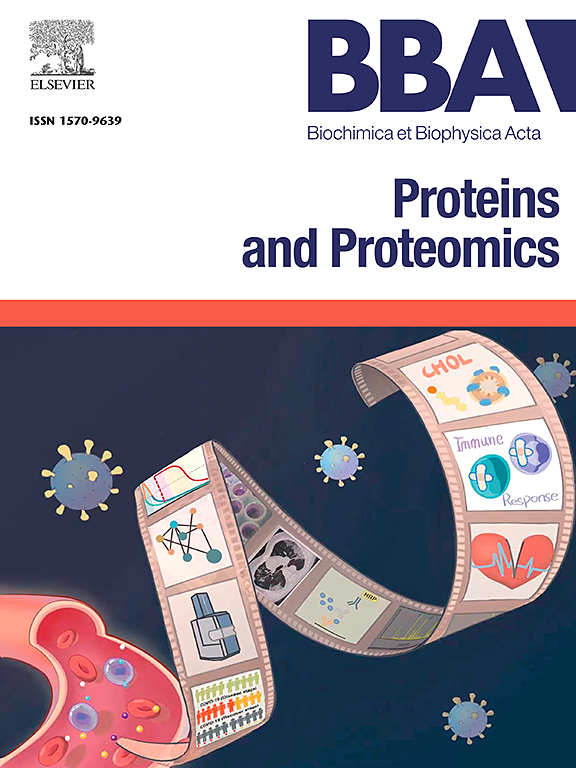HDAC7通过NCoR-HDAC3解离影响ER- 转录。
IF 2.3
4区 生物学
Q3 BIOCHEMISTRY & MOLECULAR BIOLOGY
Biochimica et biophysica acta. Proteins and proteomics
Pub Date : 2025-06-11
DOI:10.1016/j.bbapap.2025.141083
引用次数: 0
摘要
HDAC7(组蛋白去乙酰化酶7)与包括乳腺癌在内的许多疾病有关。HDAC7通过协助核小体组蛋白的去乙酰化来重塑染色质,从而调控基因的表观遗传表达。然而,HDAC7是一种假去乙酰化酶,其酶活性较弱,不能直接使组蛋白去乙酰化。相反,HDAC7通过NCoR(核受体协同抑制因子)将组蛋白支架激活HDAC3(组蛋白去乙酰化酶3)来调节转录。最近的证据表明,HDAC7的失活伪活性位点与AR(雄激素受体)转录因子上的乙酰赖氨酸结合,破坏HDAC3-NCoR支架并激活转录。为了扩展在AR中观察到的乙酰化依赖性可逆支架,这里测试了HDAC7与其他核受体的结合,包括GR(糖皮质激素受体)、PR(黄体酮受体)、TR(甲状腺受体)和RXR(类维生素a受体),特别关注ER- α(雌激素受体)。在生理相关的乳腺癌细胞系中建立了乙酰赖氨酸依赖性HDAC7- ncor - hdac3结合和基因表达,证实了乙酰赖氨酸介导的HDAC7可逆支架在核受体转录激活的表观遗传调控中起作用。本文章由计算机程序翻译,如有差异,请以英文原文为准。
HDAC7 influences ER-⍺ transcription via NCoR-HDAC3 dissociation
HDAC7 (histone deacetylase 7) is involved in many diseases, including breast cancer. HDAC7 regulates gene expression epigenetically by assisting in the deacetylation of nucleosomal histones to remodel chromatin. However, HDAC7 is a pseudodeacetylase that displays weak enzymatic activity and cannot directly deacetylate histones. Instead, HDAC7 scaffolds histones to active HDAC3 (histone deacetylase 3) via NCoR (nuclear receptor corepressor) to regulate transcription. Recent evidence documented that the inactive pseudo-active site of HDAC7 binds an acetyllysine on the AR (androgen receptor) transcription factor to disrupt HDAC3-NCoR scaffolding and activate transcription. To expand on the acetylation-dependent reversible scaffolding observed with AR, here HDAC7 binding was tested with additional nuclear receptors, including GR (glucocorticoid receptor), PR (progesterone receptor), TR (thyroid receptor), and RXR (retinoid x receptor), with particular focus on ER-⍺ (estrogen receptor alpha). Acetyllysine-dependent HDAC7-NCoR-HDAC3 binding and gene expression was established with ER-⍺ in a physiologically relevant breast cancer cell line, which substantiates acetyllysine-mediated reversible scaffolding by HDAC7 in the epigenetic regulation of nuclear receptor transcriptional activation.
求助全文
通过发布文献求助,成功后即可免费获取论文全文。
去求助
来源期刊
CiteScore
8.00
自引率
0.00%
发文量
55
审稿时长
33 days
期刊介绍:
BBA Proteins and Proteomics covers protein structure conformation and dynamics; protein folding; protein-ligand interactions; enzyme mechanisms, models and kinetics; protein physical properties and spectroscopy; and proteomics and bioinformatics analyses of protein structure, protein function, or protein regulation.

 求助内容:
求助内容: 应助结果提醒方式:
应助结果提醒方式:


